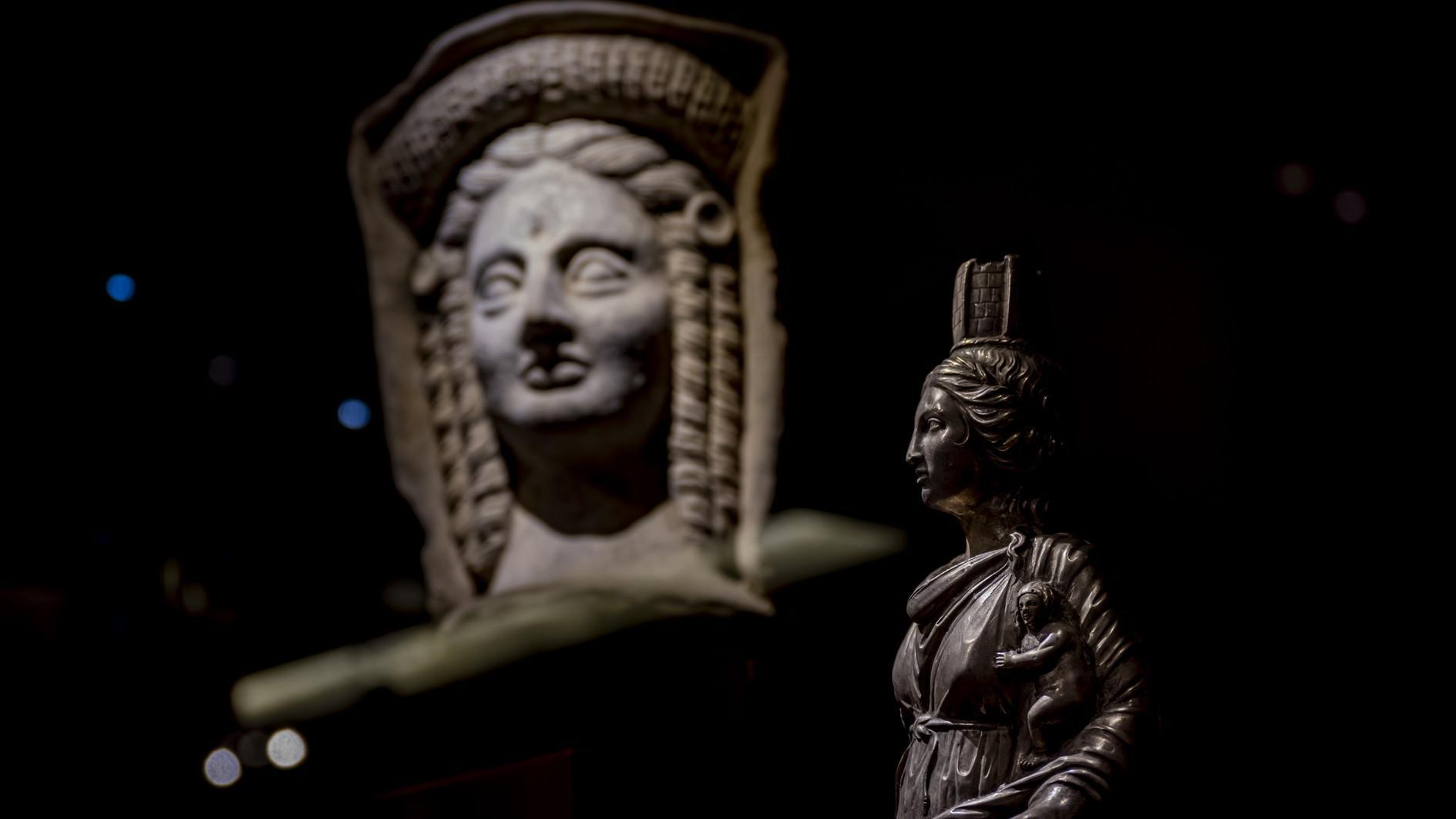
A 2,700-year-old necklace that was unearthed at the Bintepeler archaeological site in the western province of Manisa and illegally smuggled to the U.S. has been returned to Türkiye after a legal battle and is now at the Anatolian Civilizations Museum in Ankara.
“If you include an Anatolian-origin artifact in your collection illegally, sooner or later, Türkiye’s Culture and Tourism Ministry will become aware of it and will bring it back to the country through a significant legal effort,” Culture and Tourism Minister Mehmet Nuri Ersoy said.
As part of the Ankara Culture Road Festival, Ersoy visited the “Kaçış Yok” (No Way Out) exhibition on the fight against cultural property smuggling and the “Yeryüzü Rüyaları: Anadolu” (Dreams of Earth: Anatolia) exhibition at the Anatolian Civilizations Museum.
While speaking in front of the gold necklace, which was smuggled to the U.S. from the Bintepeler archaeological site in Manisa and returned to Türkiye by the Boston Museum of Fine Arts, Ersoy noted that the necklace was delivered to the New York Consulate General on Sept. 3.
He mentioned that the exhibition consists of artifacts brought back from the U.S. and Switzerland, as well as those seized within Türkiye’s borders.
“Last year, we organized this event for the first time in collaboration with UNESCO. We aim to raise awareness of our citizens. The most important tool in fighting against smuggling is the active involvement of our citizens. If you want to intimidate treasure hunters, you need to intimidate buyers. These artifacts were brought to the U.S. in the 1970s and exhibited by the Boston Museum of Fine Arts. The museum officials suspected the artifacts were of Anatolian origin and informed us about them. Getting such information doesn’t guarantee you will get the artifact. As a country, you are responsible for proving that the artifact is of Anatolian origin and was taken illegally. The Anti-Smuggling Department is performing very effectively in this regard with nearly 100 percent success in bringing them back to Türkiye," Ersoy said.
Increasing number of protocols
Ersoy explained that the return of the 2,700-year-old necklace was the result of such dedicated efforts.
“With these efforts here, we are correcting the global perception. It’s now widely understood that if you illegally add an artifact of Anatolian origin to your collection, the Culture and Tourism Ministry will eventually find out and will reclaim it through extensive legal means. For instance, we have an ancient marble head here that was acquired by a foreign collector. After the collector died, the artifact was inherited by their children. The children knew that the Turkish government will claim the artifact through legal proceedings, so they voluntarily returned it to us. We proved the artifact’s origin, and they willingly handed it over. We see more cases like this, which shows that our efforts give results. We are increasing the number of protocols we sign, and this sets an example for other countries. We are also making the world know that it is shameful to display stolen artifacts,” Ersoy said.
Speaking about the ongoing Cultural Road Festival, Ersoy said, "The Cultural Road Festival has now become a brand, not only a Turkish brand but an international one. We applied to the federation of festivals and we were accepted. Now, we need to increase the international recognition of the festival. You can consider this as a tourism promotion and branding effort. This year, we included world-renowned, highly followed art institutions and artists in the event. We have many international activities this year, too.”
Fifty-one of the works under protection in Türkiye can be visited in the “No Way Out”’ exhibition at the Museum of Anatolian Civilizations until Sept. 29.